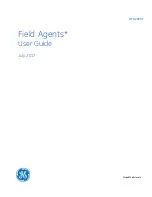MSC8113 Reference Manual, Rev. 0
Freescale Semiconductor
11-1
SQBus
11
All SC140 cores can use the SQBus to fetch program code from an external memory on the
60x-compatible system bus. This feature is useful for applications needing more program
memory than the internal memory. The bus runs at the SC140 core frequency and allows data bus
accesses of up to 128-bit reads and 64 bit writes. The SQBus is also typically used to configure
the MSC8113 device. Each SC140 core can access the IPBus through the SQBus for configuring
modules such as the DSI, timers, Ethernet controller, and TDM. Accessing the system bus
through the SQBus, an SC140 core can configure the DMA controller, the memory controller,
and other modules. It can access the M1 memory of another extended core. Moreover, an SC140
core can access other devices on the system. For example, it can configure the DMA controller of
yet another MSC8113 device on the system or directly access the M1 and M2 memories of that
device.
The SQBus is a multi-master, multi-slave bus. The three SC140 cores are the masters of this bus.
The slaves are the IP master for accesses to the IPBus and the system bus interface for accesses to
the system bus. The IP master forwards accesses from the SQBus and from the local bus to the
IPBus. When there are simultaneous requests from both the local bus and the SQBus, the SQBus
receives higher priority and wins the arbitration. As Figure 11-1 shows, the SQBus connects the
three extended cores through their QBuses to the system bus and to the IPBus. The bus is highly
optimized for sharing resources between multiple SC140 cores. The SQBus arbitration model is
exactly the same as that for MQBus (see Section 10.1, MQBus Arbitration Model).
Access to addresses 0x01F80000–0x01FFFFFF are forwarded to the IP master. All other SQBus
accesses are forwarded to the system bus interface. No pipeline is allowed when different slaves
are accessed. If an access to slave A wins the arbitration and there is already an open access to
slave B, then the access to slave A waits until the access to slave B completes before it executes.
Summary of Contents for MSC8113
Page 1: ...MSC8113 Reference Manual Tri Core 16 Bit Digital Signal Processor MSC8113RM Rev 0 May 2008 ...
Page 20: ...MSC8113 Reference Manual Rev 0 xx Freescale Semiconductor Contents ...
Page 28: ...MSC8113 Reference Manual Rev 0 xxviii Freescale Semiconductor ...
Page 56: ...MSC8113 Reference Manual Rev 0 1 28 Freescale Semiconductor MSC8113 Overview ...
Page 76: ...MSC8113 Reference Manual Rev 0 2 20 Freescale Semiconductor SC140 Core Overview ...
Page 134: ...MSC8113 Reference Manual Rev 0 4 30 Freescale Semiconductor System Interface Unit SIU ...
Page 168: ...MSC8113 Reference Manual Rev 0 6 18 Freescale Semiconductor Boot Program ...
Page 180: ...MSC8113 Reference Manual Rev 0 7 12 Freescale Semiconductor Clocks ...
Page 260: ...MSC8113 Reference Manual Rev 0 8 80 Freescale Semiconductor Memory Map ...
Page 300: ...MSC8113 Reference Manual Rev 0 9 40 Freescale Semiconductor Extended Core ...
Page 304: ...MSC8113 Reference Manual Rev 0 10 4 Freescale Semiconductor MQBus and M2 Memory ...
Page 308: ...MSC8113 Reference Manual Rev 0 11 4 Freescale Semiconductor SQBus ...
Page 590: ...MSC8113 Reference Manual Rev 0 17 46 Freescale Semiconductor Interrupt Processing ...
Page 614: ...MSC8113 Reference Manual Rev 0 18 24 Freescale Semiconductor Debugging ...
Page 622: ...MSC8113 Reference Manual Rev 0 19 8 Freescale Semiconductor Internal Peripheral Bus IPBus ...
Page 724: ...MSC8113 Reference Manual Rev 0 21 32 Freescale Semiconductor UART ...
Page 920: ...MSC8113 Reference Manual Rev 0 25 150 Freescale Semiconductor Ethernet Controller ...
Page 1171: ...MSC8113 Reference Manual Rev 0 Freescale Semiconductor C 61 EF wait_rts P 01077FFC 9F rts 71 ...
Page 1172: ...MSC8113 Reference Manual Rev 0 C 62 Freescale Semiconductor MSC8113 Boot Code ...
Page 1202: ...MSC8113 Reference Manual Rev 0 Index 30 Freescale Semiconductor Index ...


















